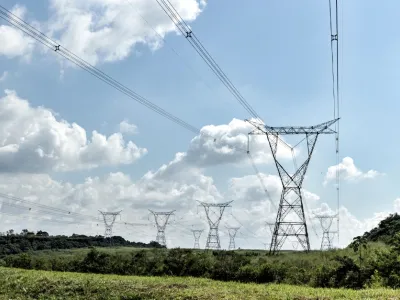The Energy Highway: How electricity reaches your home

Every time we use electricity, it seems like an instantaneous process – just flip a switch and the lights turn on. In reality, the electric grid is much more complicated. Before it can be used, electricity must be generated and carried over potentially thousands of miles of lines and wires before it reaches our homes.
This blog post is the beginning of a three-part series that provides an overview of the electric grid and why new transmission investments will be beneficial for utility customers in Minnesota and around the country.
The Electric Grid
The electric grid is a complex system that creates and transmits electricity. Three primary areas form the backbone of the grid: generation, transmission, and distribution. Each plays its own role and is necessary to bring electricity to your home.
Generation is the starting point for the electric grid. Fossil fuels, nuclear energy, and renewable resources are all used to produce electricity. In the animation above, the wind turbines and solar panels represent centralized power generation. Centralized generation produces energy at one location before being transmitted to where it is needed. Although fossil fuel plants, large wind farms, solar fields, and batteries still operate this way, the electric grid has been modernized to include additional generation resources on the distribution system. These include smaller solar arrays on homes and businesses, as well as community solar gardens. These sources of non-centralized generation are called “demand side resources.”
Traditional power plants that use fossil fuels (such as coal and natural gas) were, until recently, the cheapest way to generate electricity. That is no longer the case. Solar and wind resources can now create electricity more cheaply than fossil fuel alternatives. The financial advisory firm Lazard recently estimated federal tax subsidies could entirely offset the cost of producing renewable energy. Our aging fossil fuel power plants need to retire, and more generation resources will need to be added to the grid in order to satisfy energy demands. Renewable resources are the most cost-effective option, and will be necessary to meet Minnesota’s 100% carbon-free energy standard,
Transmission is the midpoint of the energy system. Once electricity is produced, it must travel to the cities and communities that need it. Think of transmission lines as a highway. They are larger and hold more electricity at higher voltages than the power lines you might see in your neighborhood. When electricity is generated, it travels down the highway until it reaches its exit: a city or town where it will be used.
Distribution is the final stage necessary to bring electricity to your home. After exiting the transmission highway, electricity is “stepped down” and its voltage is lowered. It then travels on smaller distribution lines before reaching where it needs to go. These distribution lines can be compared to roads in cities, towns, and neighborhoods. They don’t hold as many cars and you can’t travel as fast, but they serve as the connecting point between the highway and individual homes and businesses.
What’s Next?
Each segment of the electric grid is important. Without a way to produce energy or bring it to your home, you would be unable to turn your lights on, refrigerate your food and medication, use your air conditioning, or watch your favorite shows. Making sure these systems are reliable and capable of keeping up with electricity demand has been a key focus of stakeholders and regulators in recent years. Our upcoming blog posts will provide more detail on why new transmission investments are essential for accessing low-cost energy and keeping the grid functioning properly.
To keep up to date with this series, as well as what CUB is doing at the Public Utilities Commission, subscribe to our newsletter.